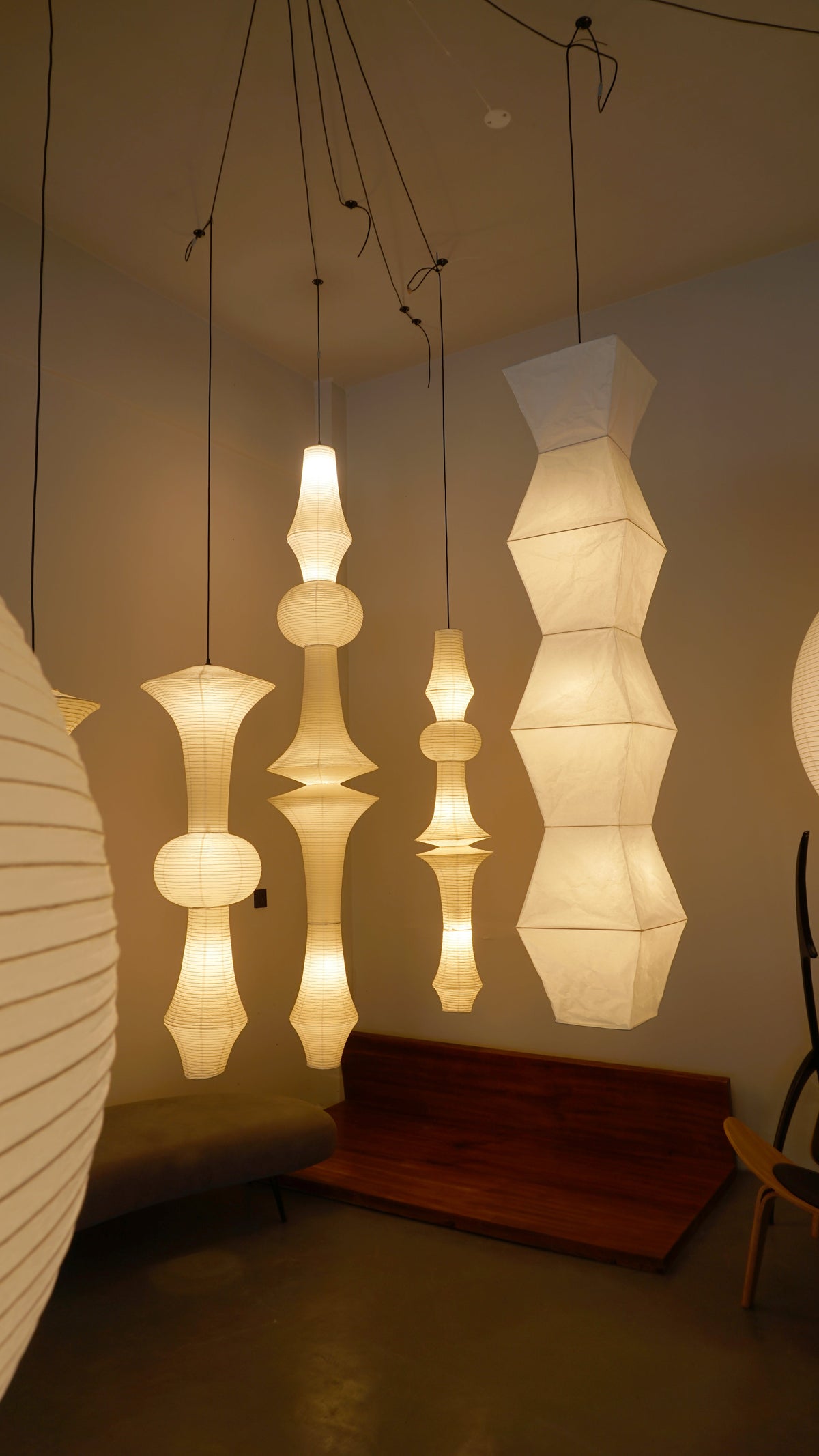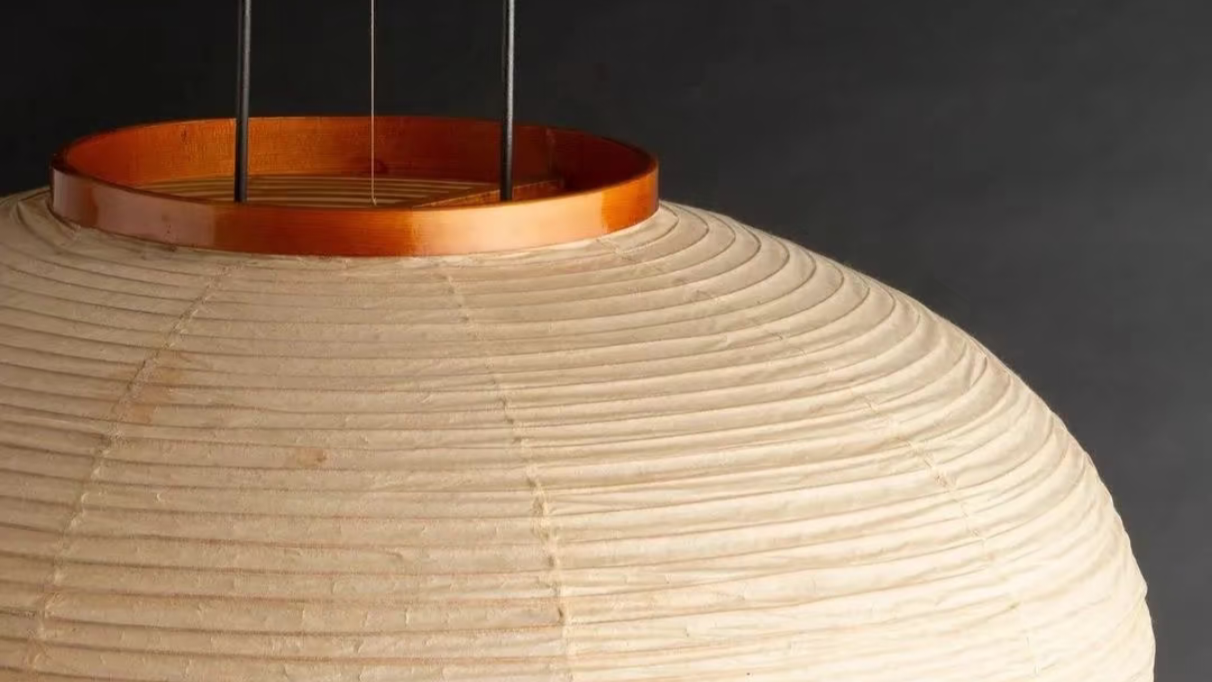Introduction — light that changes how a room feels
Lighting does more than brighten a room — it sets mood, highlights textures, and guides the eye. A Japanese lamp often aims for quiet beauty: warm, diffuse light and simple shapes that wear well over time. Compare that with many global lighting trends that favor sparkle, metallic finishes, or sculptural drama, and you’ll see why a Noguchi Akari lamp still feels fresh.
Note: you may see the phrase misspelled as “japonese lamp” in some searches — it’s the same idea: paper, wood, and calm light.
What makes Japanese lamp design unique?
Japanese lighting traditions emphasize materials, scale, and the way light interacts with surfaces:
-
Paper & texture: Many japanese paper lamps use washi — a translucent paper that gently diffuses bulbs into an even, warm glow. Think of paper lamp table fixtures or a hanging 30 inch paper lantern that softens shadows across a room.
-
Sculptural restraint: A Japanese fixture can double as a sculpture lamp, but it’s sculpture with restraint. Shapes are often simple — spheres, cylinders, or flattened ovals — so the light feels natural, not showy.
-
Layered, calm lighting: Instead of blasting a room with a single bright source, Japanese style lighting tends to layer: a ceiling lantern, a table paper lamp, and a small accent. This creates depth without glare.
Keywords you’ll often encounter: japanese hanging light, japanese hanging light fixtures, japanese ceiling light, and japanese ceiling lantern — all pointing to airy fixtures that respect the room’s feel.

Noguchi Akari: the paper lamp that is also art
Isamu Noguchi’s Akari series pushed the Japanese lantern idea into the world of modern design. These akari pendant lamp and akari ceiling lamp forms are minimal but expressive:
-
Akari shapes: Popular sizes include statement pieces like akari 120a and akari 100a, mid-size favorites like akari 75d and akari 75a, and smaller table versions like the akari 24n lamp or akari 20n table lamp.
-
Light & shadow: Akari lighting is prized for how it scatters light — soft gradients instead of hard edges. That makes them fantastic for living rooms, bedrooms, and stair landings where gentle illumination is key.
-
Sculpture & function: Akari pieces behave as sculpture lamp objects in the room while remaining supremely functional. They are at once art and everyday light.
When we say Japanese paper lamps or paper lamp table, we mean pieces that put the glow first: skin-flattering, furniture-friendly, and soothing.
How Japanese style lamps differ from many global lamps
Here are practical differences you’ll notice when comparing a japanese style lamp to other lamp types from around the world:
-
Light quality vs. brightness: Many Western fixtures emphasize brightness or direction (spotlights, metallic pendants). Japanese fixtures favor warm, diffused light that reduces glare and softens contrast.
-
Material honesty vs. ornament: Global trends include crystal, chrome, or painted ceramic (japanese porcelain lamps are an exception within Japan’s own varied tradition). Japanese paper lamps prioritize natural textures and visible structure.
-
Form & restraint: Where some global designers aim for maximal drama, Japanese lamps use clean lines and quiet proportion — a key reason styles stay never out of date.
-
Versatility: A japanese lamp table or table lamp japanese style fits with modern, mid-century, or vintage interiors. The same goes for hanging options like japanese paper pendant lights.

Where they shine — best uses for Japanese/Noguchi-style lighting
-
Living room soft light: Use a large akari 75d or akari 100a as a main ambient source that doesn’t dominate the room.
-
Dining or kitchen islands: A cluster of small akari pendant lamp pieces creates layered warmth.
-
Bedside or reading: A table paper lamp like the akari 20n lamp gives pleasant reading light without eye strain.
-
Hallways & stairs: An akari ceiling lamp over a stair landing adds vintage charm and a welcoming glow.
These lamps are often recommended among the best lamps for a calm, cozy home because of their forgiving light.
Why Noguchi-style paper lamps feel timeless
Three short reasons these lamps never age badly:
-
Simple geometry: Circles and cylinders are design staples. They read as classic rather than trendy.
-
Soft, human light: Warm, even illumination flatters faces and materials — and people remember how a room felt, not how shiny the fixture was.
-
Cultural roots + modern form: The blend of traditional techniques (paper, bamboo) with modern proportions creates a “retro but forever” look.
Quick styling tips
-
Pair an akari ceiling lamp with a lower table paper lamp to create depth.
-
Mix an akari pendant lamp with a metal or glass task lamp for contrast.
-
For high ceilings, a large akari 120a anchors the space without harsh glare.

Final thought
In a world of many lighting styles, the Japanese lamp — and especially Noguchi-inspired Akari paper lamps — stands apart because it focuses on what lighting should do best: shape mood, flatter the room, and feel quietly right for years to come. If your goal is warm lighting, honest materials, and a design that won’t date, a paper lamp is a very wise choice.





0 Kommentare